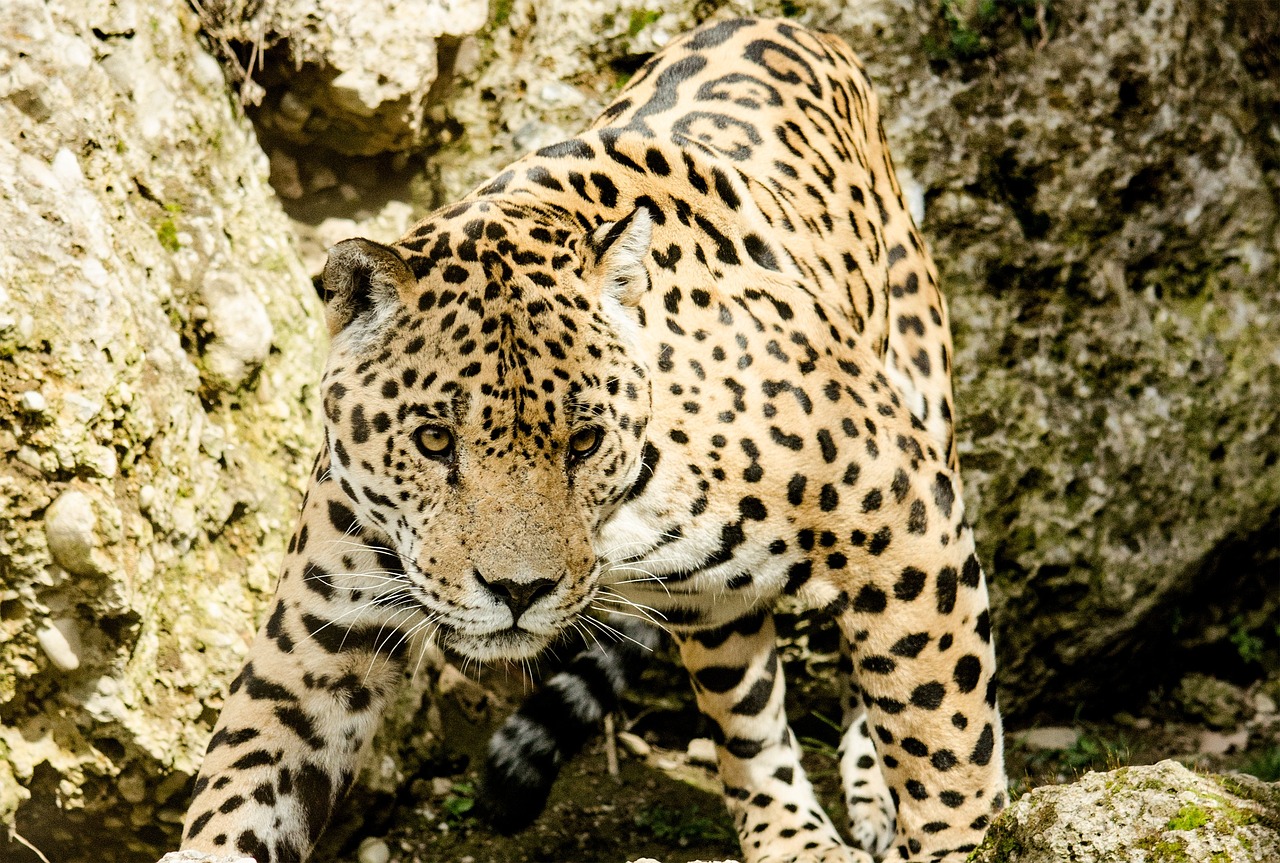Geographic Range of Jaguars
Jaguars (Panthera onca), the largest big cats in the Americas, boast a geographic range that extends from the southern United States to the northern regions of Argentina. Primarily concentrated in the Amazon Rainforest, their habitat is diverse, encompassing not only flourishing tropical rainforests but also wetlands, savannas, and grasslands. The diverse ecosystems offer varying environments crucial for their survival and hunting strategies.
The Importance of Rainforests
Rainforests are pivotal in the ecological niche of the jaguar. The Amazon Rainforest is a vast, dense jungle that provides these majestic cats with cover and abundant prey. The humidity and canopy structure, packed with vines and towering trees, facilitates the jaguar’s adept ambush tactics. Jaguars are known for their strength and stealth, making them skilled hunters of creatures like capybaras, tapirs, and peccaries that thrive in these green labyrinths.
Rainforests supply a rich diversity of flora and fauna, fostering a complex food web essential for maintaining the jaguar population. The trees are home to various birds and small mammals, while the ground is teeming with reptiles and rodents, further ensuring that jaguars can find sustenance. The undergrowth is often thick, allowing jaguars to remain hidden while they stalk their prey.
Savannas and Grasslands
Beyond the rainforest, jaguars are adaptable and can also thrive in savannas and grasslands. These ecosystems, characterized by open spaces and scattered trees, offer a contrasting environment to the closed-canopy forests. Grasslands provide jaguars with a different hunting landscape, where they can leverage their exceptional power and speed.
In regions such as the Brazilian Cerrado, jaguars navigate through grassland patches, using the tall grasses as ambush points. Here, they prey on lower-sized animals such as deer, rodents, and various birds. The distribution of prey in these areas tends to be more scattered than in rainforest ecosystems, requiring jaguars to adjust their hunting strategies.
Wetland Habitats
Wetland ecosystems, including swamps, lagoons, and marshes, are also critical to the jaguar’s survival. The Pantanal, the world’s largest tropical wetland, serves as a prime example of jaguar habitat. Here, fluctuating water levels drive seasonal changes in prey availability and require jaguars to adapt dynamically.
In the Pantanal, jaguars are often seen hunting along riverbanks, where they utilize their swimming abilities to catch fish or infiltrate the territory of caimans. This adaptability illustrates the jaguar’s wide-ranging ecological capabilities and its ability to exploit different habitats for hunting.
Subtropical and Tropical Moist Forests
Subtropical and tropical moist forests present a unique habitat for the jaguar, providing a warm climate and rich biodiversity. These areas typically receive high rainfall, supporting a plethora of plant and animal species. Jaguars are adept at navigating this environment, where tree cover offers the necessary concealment for stalking prey.
In regions like the Yucatán Peninsula, the jaguar’s presence plays a vital role in maintaining a balanced ecosystem. By preying on large herbivores, jaguars control population sizes, which in turn affects vegetation dynamics and health across the forest landscape.
Urbanization and Habitat Fragmentation
Human interference has significantly affected jaguar habitats through urbanization and agriculture. As cities expand and land is converted for agriculture, the natural ranges of jaguars diminish and fragment. This loss of habitat poses severe risks to their population, making it increasingly difficult for jaguars to find mates and maintain genetic diversity.
Habitat fragmentation often forces jaguars into smaller areas, which can lead to increased competition for food and possible conflicts with humans. This loss of territory also limits their roaming area, essential for hunting, leading to increased human-wildlife conflict as jaguars encroach on agricultural lands in search of food.
Conservation Efforts
Conservation initiatives are critical for ensuring the ongoing survival of jaguars. Protected areas, such as national parks and reserves, play a significant role in safeguarding important habitats from development and exploitation. The creation of wildlife corridors helps connect fragmented habitats, allowing jaguars to travel and find new territories without crossing human-dominated landscapes.
Collaboration with local communities is also vital for conservation strategies. By promoting eco-tourism and providing incentives for communities to protect their natural environments, the understanding of the jaguar’s role in ecosystem health can foster support for their conservation.
Climate Change’s Impact
The effects of climate change further exacerbate the vulnerability of jaguar habitats. Altered rainfall patterns, increasing temperatures, and shifting ecosystems can alter prey availability and impact the structure of rainforests and wetlands. Rising temperatures may push the jaguar’s prey into higher altitudes or different geographic regions, subsequently forcing the jaguars to adapt or migrate to survive.
In conclusion, jaguars are intrinsically linked to diverse habitats, from lush rainforests teeming with life to expansive savannas and wetlands. Protecting these habitats from urban development, agriculture, and climate change is vital for the sustainability of jaguar populations. As apex predators, maintaining the jaguar population is crucial for the health of various ecosystems, underscoring the need for robust conservation measures to ensure their continued existence.







